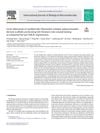The Diameter Factor of Aligned Membranes Facilitates Cutaneous Wound Healing by Promoting Epithelialization in an Immune Way
February 2021
in “
bioRxiv (Cold Spring Harbor Laboratory)
”
TLDR A300 membranes help skin heal faster by promoting cell growth and repair.
The study investigated the impact of the diameter of aligned electrospinning membranes on skin wound healing, focusing on three different fiber diameters: 319±100 nm (A300), 588±132 nm (A600), and 1048±130 nm (A1000). The A300 membranes were found to significantly enhance cell proliferation and spreading, promoting skin wound healing through improved epithelialization and vascularization, and even facilitating the regeneration of hair follicles. The molecular mechanism involved the transformation of macrophages to reparative phenotypes with increased expression of IL10 and TGFβ, which in turn promoted epidermal cell migration by secreting matrix metalloproteinases 12 (MMP12). These findings suggested that A300 membranes could be a promising candidate for guided skin regeneration applications.




